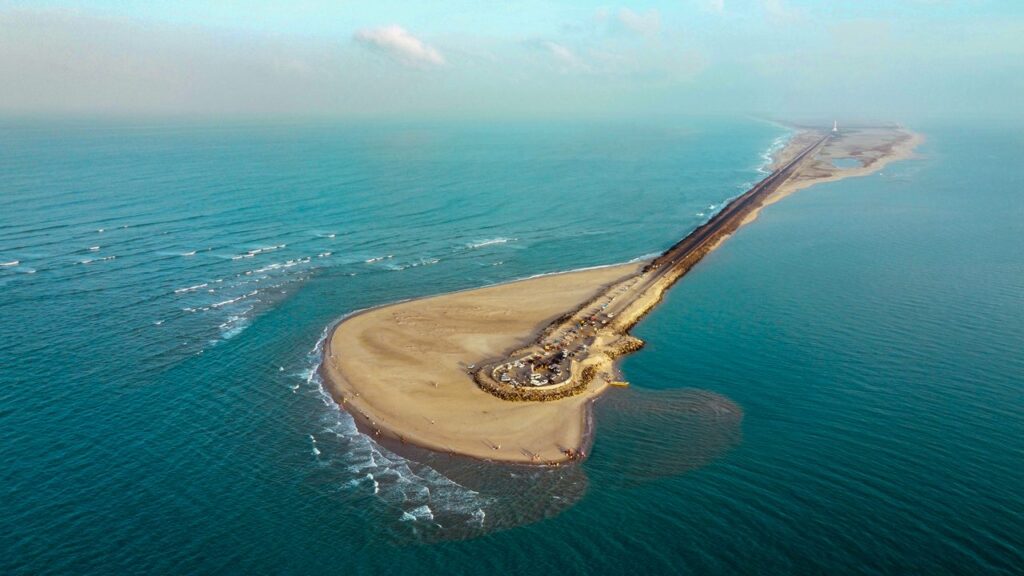Rameswaram, a serene and sacred island located off the southeastern coast of India, is one of the most revered pilgrimage sites in Hinduism. Nestled between the mainland of Tamil Nadu and the northern shores of Sri Lanka, Rameswaram is renowned for its historical, spiritual, and natural wonders. With its deep-rooted connections to Indian mythology and unique coastal beauty, Rameswaram has long been a place of spiritual solace, attracting millions of pilgrims and tourists alike. This blog delves into the timeless allure of Rameswaram, exploring its temples, legends, and natural attractions that make it a pilgrimage of immense significance.
1. The Sacred Legend of Rameswaram
The mythology surrounding Rameswaram is profoundly woven into the story of Ramayana, one of the greatest Hindu epics. According to legend, Lord Rama, the hero of the Ramayana, built a bridge from Rameswaram to Sri Lanka to rescue his wife, Sita, from the demon king Ravana. After defeating Ravana, Rama returned to Rameswaram and worshipped Lord Shiva to absolve himself of any sins incurred during his battles. The sanctity of this act transformed Rameswaram into one of the most significant pilgrimage destinations, marking it as a place of worship, penance, and peace.
Ramanathaswamy Temple
The focal point of Rameswaram’s spiritual significance is the Ramanathaswamy Temple, a grand structure dedicated to Lord Shiva. It is believed that the lingam inside the temple was installed by Lord Rama himself. The temple is one of the 12 Jyotirlingas (sacred shrines dedicated to Lord Shiva), making it an essential pilgrimage site for Hindus. The temple’s intricate architecture, towering gopurams (gateways), and extensive corridors add to the divine aura and allure of the sacred site.
2. Architectural Marvels and Iconic Corridors
Ramanathaswamy Temple is not only a place of immense spiritual significance but also an architectural marvel. Its corridors, famously known as the longest temple corridors in the world, stretch over 1,200 meters and feature nearly 1,000 intricately carved pillars. Walking through these vast hallways is an awe-inspiring experience, with the rhythmic alignment of pillars and delicate stonework captivating visitors.
Each pillar reflects the ancient Dravidian architectural style and is adorned with artistic designs depicting mythological stories and symbols. The aesthetic symmetry and craftsmanship of the temple corridors leave an indelible impression, offering a glimpse into the artistic achievements of ancient India.
3. Spiritual Cleansing at the Holy Wells
An integral part of the pilgrimage to Rameswaram involves a ritual bath in the temple’s 22 holy wells, known as theerthams. These wells are situated within the Ramanathaswamy Temple complex and are believed to hold sacred water with purifying properties. Devotees take a dip in each of these wells as a way to cleanse themselves of sins and impurities, achieving spiritual rejuvenation and peace. Each well has its own name, significance, and story, adding depth and dimension to this age-old practice.
The final bath is taken in the waters of Agni Theertham, located at the seashore near the temple. According to legend, Lord Rama bathed in this spot to purify himself. The experience is one of physical and spiritual cleansing, an act that embodies the essence of pilgrimage itself.
4. Exploring Dhanushkodi: The Ghost Town
Located at the tip of Rameswaram, Dhanushkodi is a town that stands as both a relic of nature’s fury and a testament to resilience. In 1964, a devastating cyclone destroyed this small town, which remains uninhabited and is now referred to as the “Ghost Town.” Its haunting beauty lies in its ruins — the crumbled churches, old railway stations, and broken structures tell a story of a time long past.
Today, Dhanushkodi is a popular destination for travelers seeking both history and tranquility. With pristine beaches, turquoise waters, and the remnants of an ancient town, Dhanushkodi offers a unique experience that’s different from the typical temple pilgrimage. The narrow land strip between the Bay of Bengal and the Indian Ocean provides breathtaking views, making it an ideal spot for photography, reflection, and a sense of being at the edge of the world.
5. Adam’s Bridge or Rama’s Setu: The Mythical Connection to Sri Lanka
One of the most intriguing attractions in Rameswaram is the famed Adam’s Bridge, or Rama’s Setu. According to the Ramayana, this bridge of floating stones was built by Lord Rama’s vanara (monkey) army to reach Lanka and rescue Sita. Adam’s Bridge consists of a chain of limestone shoals that stretch between Rameswaram and Sri Lanka, and its existence has been a subject of both mythological reverence and scientific study.
Visible from above, this natural bridge continues to fascinate historians, scientists, and devotees. Though parts of the bridge are submerged, some stones can still be seen floating on water, adding to its mystical aura. For pilgrims, Adam’s Bridge serves as a symbolic connection to the Ramayana and a reminder of Lord Rama’s journey, courage, and devotion.
6. Gandhamadhana Parvatam: Panoramic Views and Divine Footprints
Located on a small hillock, Gandhamadhana Parvatam is another sacred site closely associated with Lord Rama. According to legend, the hill holds an imprint of Lord Rama’s feet, believed to be from the time he surveyed Lanka. Pilgrims climb the steps to this temple to offer prayers and seek blessings.
From the top, visitors can enjoy sweeping panoramic views of Rameswaram, with its azure waters and lush landscape. The peaceful ambiance and divine energy of Gandhamadhana Parvatam make it a cherished spot for devotees seeking moments of reflection, surrounded by the beauty of nature.
7. Kothandaramaswamy Temple: A Historic Gem by the Sea
Situated along the coastal line, the Kothandaramaswamy Temple is a unique shrine dedicated to Lord Rama, Sita, and Hanuman. The temple stands as a historical gem on its own small island, accessible by a narrow road from the main island of Rameswaram. It is believed to mark the spot where Vibhishana, Ravana’s brother, surrendered to Lord Rama.
The temple, surrounded by serene waters, has weathered the elements and withstood the test of time, including the cyclone that devastated Dhanushkodi. Its serene surroundings and connection to pivotal events in the Ramayana draw pilgrims to experience a sacred calm in its vicinity.
8. Awe-Inspiring Sunrise and Sunset at Pamban Bridge
One cannot complete a journey to Rameswaram without visiting the iconic Pamban Bridge, India’s first sea bridge and an engineering marvel. Connecting Rameswaram to the mainland, this bridge stretches over 2 kilometers across the ocean, offering mesmerizing views of the waters below. Watching the sunrise or sunset from Pamban Bridge is an awe-inspiring experience, as the sun casts brilliant hues over the sea.
The bridge is both a tourist attraction and a symbol of resilience, having withstood powerful cyclones and storms. Standing here, visitors feel a profound sense of connection to both nature and human ingenuity.
9. The Vibrant Culture and Local Cuisine of Rameswaram
Rameswaram is also a treasure trove of cultural experiences. The local cuisine features flavors unique to Tamil Nadu, with a particular emphasis on seafood and traditional South Indian dishes like dosa, idli, and spicy curries. Vendors near the temple serve delicious prasad, and the bustling local markets offer unique souvenirs, including handcrafted jewelry, seashell trinkets, and aromatic spices.
Conclusion
A pilgrimage to Rameswaram is more than just a journey to a sacred destination; it’s a spiritual experience that leaves an indelible mark on the soul. With its storied past, architectural grandeur, and mystical landscapes, Rameswaram offers a transformative experience that connects the past with the present. Whether you come to pay homage to Lord Rama, admire the ancient temples, or simply seek the serene beauty of this coastal island, Rameswaram’s timeless magic promises a journey that resonates long after you depart.

